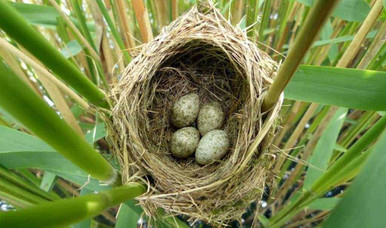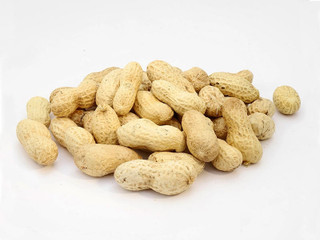The Kennedy Wild Bird Food Guide to the Reed Warbler
One of the less familiar reed birds in the UK, the Eurasian reed warbler (scientific name: Acrocephalus scirpaceus) is a summer breeding visitor to parts of the country. In this guide, we take a look at some of the most interesting reed warbler facts, including what this beautiful bird looks like and where (and when) you can spot one.What does the reed warbler look like?
The reed warbler is a brown and cream colour. Its chest and breast are often cream while its back and head are much browner. The reed warbler’s beak is short, thin and black. It is a relatively small bird measuring just 13 cm in length with a wingspan between 17 and 21cm. The reed warbler is similar in appearance to a sedge warbler and marsh warbler, so don’t confuse the three! Here’s a detailed picture of the reed warbler to compare:
The reed warbler song
The reed warbler has a beautiful song that is commonly heard throughout wetland areas in the UK. It can be described as a repetitive “churring” sound, have a listen to the clip below to see if you recognise its song! Click here to listenNesting habits
Reed warblers are often found in reed beds (hence their name) where they are also known to lay their nests. The reed warbler’s nest is impressive in that they form a large basket to lay their eggs in, laying between 3-5 eggs at any one time. Chicks are known to fledge their nest after 10 or 11 days. Here’s what the reed warbler’s eggs look like: The Eurasian reed warbler is one species that has been directly affected by the cuckoo’s brood parasitism, in which their mimic eggs are laid in warbler nests and the cuckoo chick will then be fed by its new reed warbler parents. This is one of the biggest threats to the reed warbler in the UK.
The Eurasian reed warbler is one species that has been directly affected by the cuckoo’s brood parasitism, in which their mimic eggs are laid in warbler nests and the cuckoo chick will then be fed by its new reed warbler parents. This is one of the biggest threats to the reed warbler in the UK.
What does the reed warbler eat?
The reed warbler likes to eat insects when they’re readily available, however, they are also known to eat other foods such as berries when available. If you’re looking to attract any birds to your garden or the local area, we recommend our suet for birds products that are loved by all wild birds!Spotting a reed warbler
You’ll be able to spot a reed warbler in the UK from mid-April to October, as they only visit the country for breeding during the warmer months. After which they will return to the warmer climates of Africa. They are common in the lower and central regions of England and Wales, but are also known to venture as far as the North West and the North East of England - and maybe even the lower parts of Scotland. If you think you’ve spotted a reed warbler or any other wild birds near you, don’t forget to log any sightings on our Birdspotter map for others to see!










